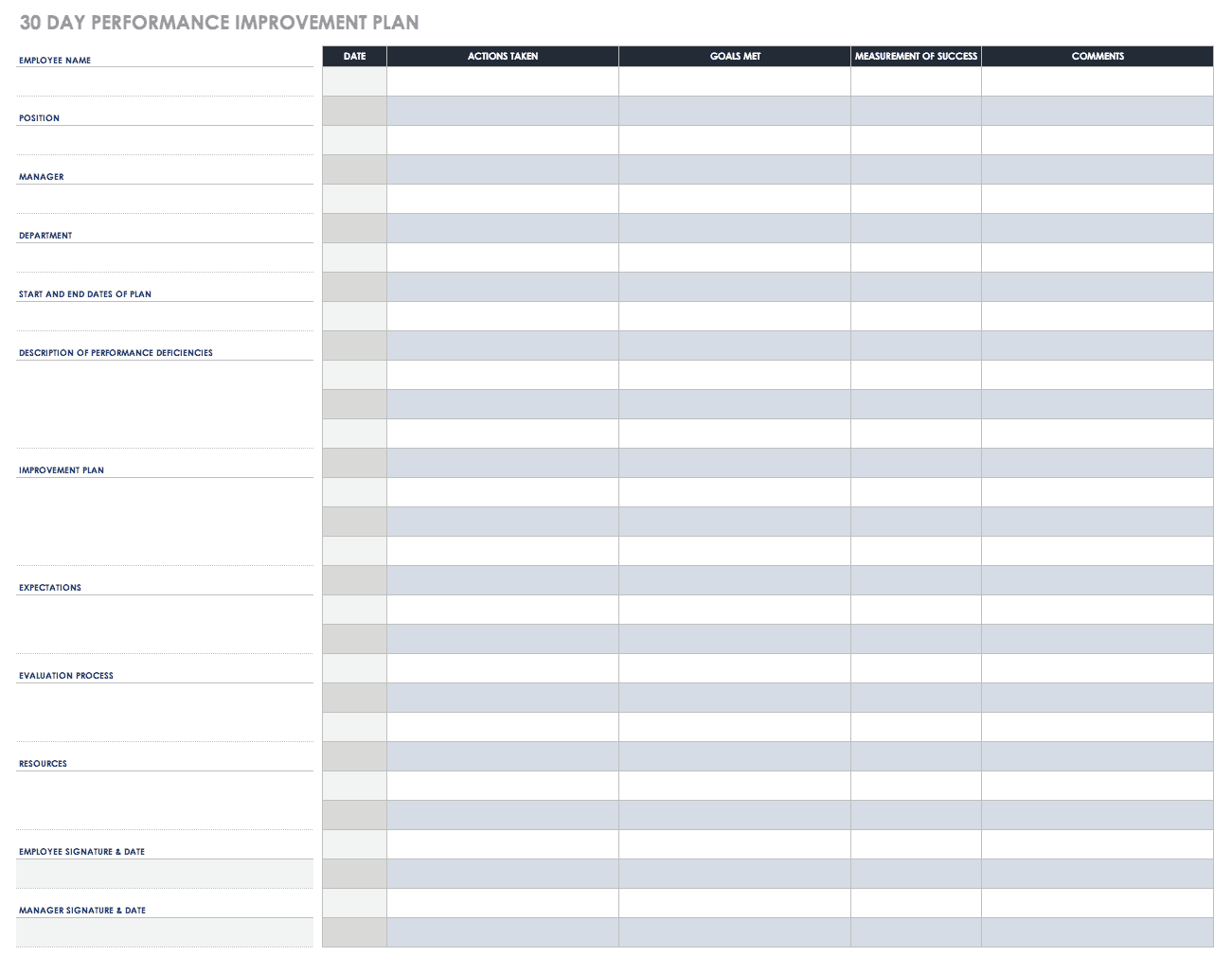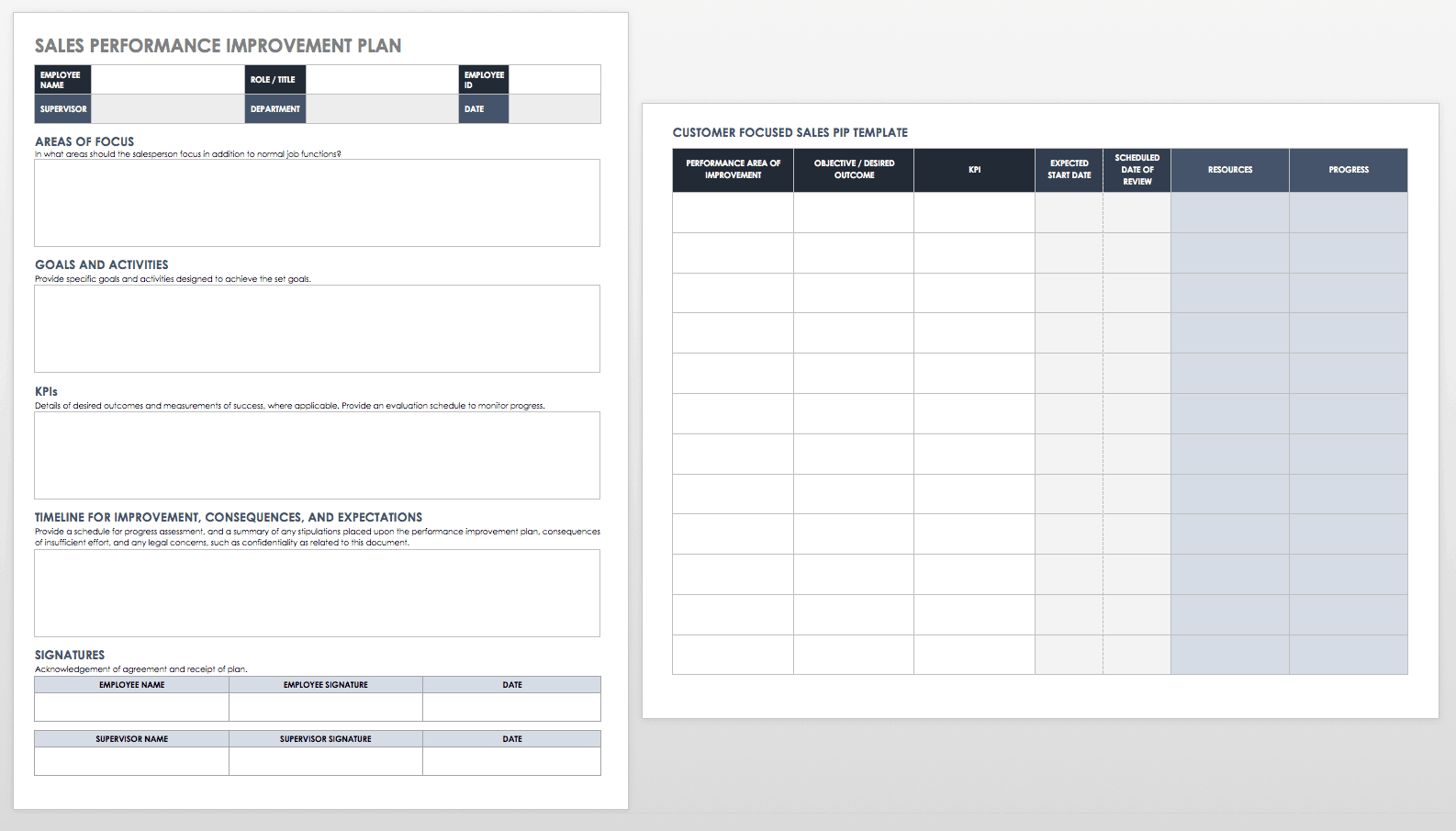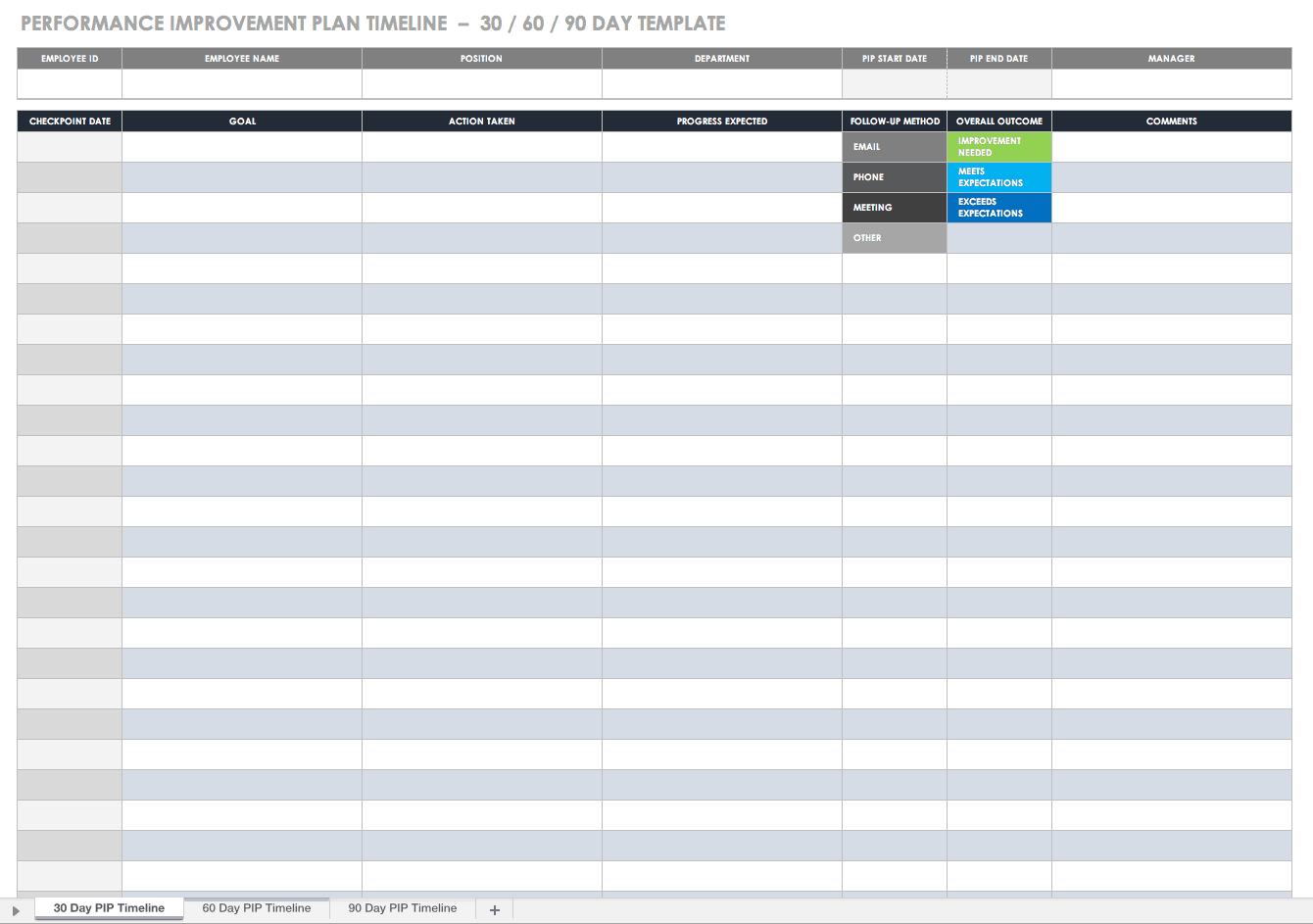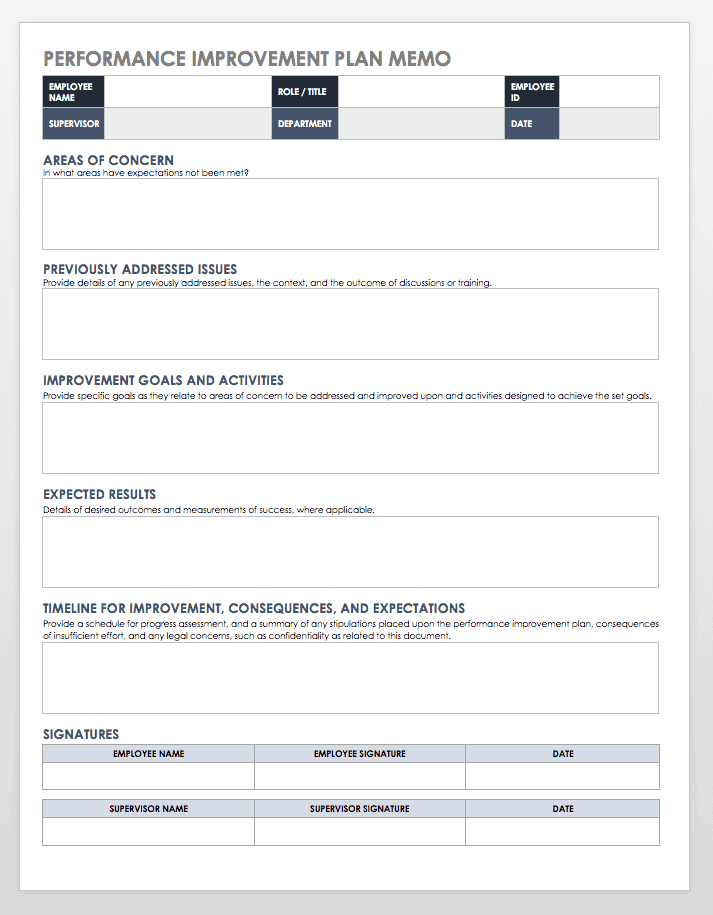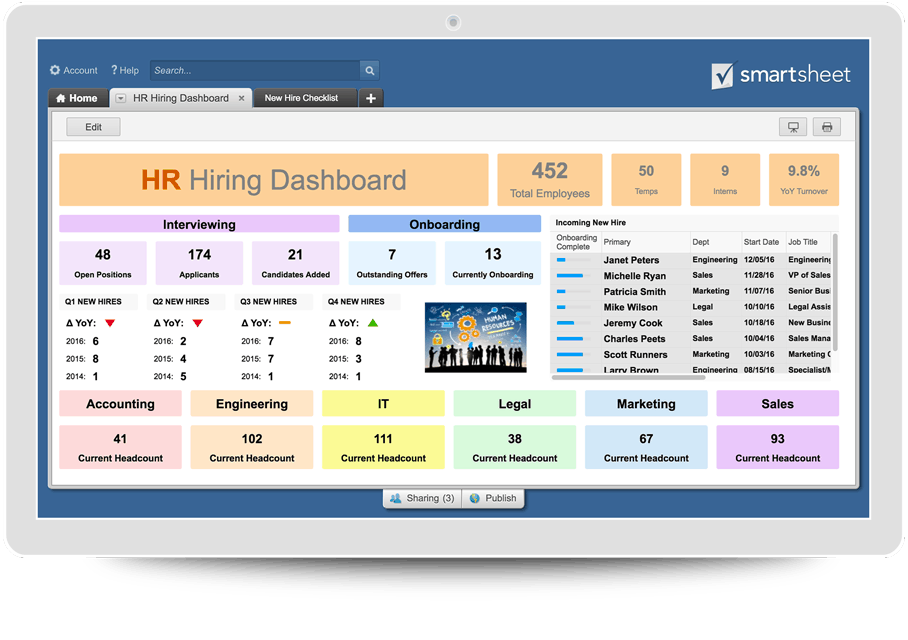What Is a Performance Improvement Plan?
A performance improvement plan is “corrective action” for addressing employee performance, not employee behavior. A PIP shifts the responsibility for improving performance so that it is shared mutually among the manager, the employee, and the company. Sometimes referred to as a performance action plan, PIP is a process and a document that communicates corrective action, provides resources, and assigns a timeline of expected results to an underperforming employee.
Employees struggling to reach a satisfactory standard of performance based on job description, company goals, organizational changes, or other performance management initiatives are held accountable by the PIP. If the expectations assigned in the PIP are not achieved within the documented timeline (for example, a 30/60/90 day period) and the employee fails to improve work performance, the PIP provides clear consequences, including termination of employment.
Customizable 30 Day Performance Improvement Plan Template
Download Excel Template
Try Smartsheet Template
Conversations with employees about poor performance are challenging enough. Don’t let creating an effective performance improvement cause additional overwhelm. Use this free template to craft a 30 day PIP. Customize the action plan and timeline to fit the needs of each employee and your schedule. This spreadsheet template includes all of the essential elements of an effective PIP.
Performance Improvement Plan Action Plan Template
Download Word Template
Try Smartsheet Template
Once the performance improvement plan meeting is over, it’s time to take action. This performance improvement action plan is designed as a standalone resource for you and the employee. Use it to help you plan and organize your PIP document, and give your employee a copy to use without having to reference the entire confidential document.
Sales Performance Improvement Plan Template
Download Sales Performance Improvement Plan Template - Word
Good sales managers use performance management coaching to consistently deliver results from their team. Sales managers or business owners who need a communication tool to supervise underachievers, improve productivity, and create a culture of high performers can use this template to break broad sales goals into smaller, workable action items. The template is designed to help you and your salesperson measure progress with key performance indicators (KPIs) and a focus on productive activities.
Performance Improvement Plan Timeline Template
Performance improvement plans cover 30, 60, or 90 day periods. Use this customizable spreadsheet template to schedule the activities, progress meetings, and PIP end date. Design it as a weekly plan of action for the employee and take a proactive approach to providing resources for them to succeed. Organize the timeline to match the objectives and expectations of your action plan and each step of the PIP for the employee to reference without accessing the confidential PIP document.
Sample Performance Improvement Plan Memo Template
Download Sample Performance Improvement Plan Memo Template
Repurpose this template and save it as a customized PDF memo each time you conclude a PIP meeting. The document is designed and formatted as a summary letter of the overall performance improvement plan. Summarize and highlight the areas that need improvement for your employee, goals for the plan, time period, expectations, and consequences of the PIP.
How Is a PIP Different Than a Performance Development Plan?
The difference between a performance improvement plan and a performance development plan (PDP) is the emphasis on the specific areas where the employee’s performance is lacking. A PIP is a detailed plan focused on the improvement of an underperforming employee. By contrast, a PDP is a broad plan of action, often part of continual annual or quarterly planning, and focuses on the ongoing development and improvement of all employees, not only the underperformers.
What Is the Purpose of a Performance Improvement Plan?
HR professionals use performance improvement plans as a formal notice of probation to satisfy employment law and regulation, and often use them outside the window of annual performance reviews to address poor performance in real time. In this context, the PIP is not only more helpful than a traditional written warning, but also a formal procedure to help set up an employee for success and provide a chance to improve in specific areas.
The objectives and outcomes of a PIP vary depending on a variety of factors but often serve to accomplish the following:
Guide one-on-one meetings between manager and employee.
Describe workplace performance expectations and open dialogue with employee.
Communicate issues with specific workplace performance.
Determine the reasons for the performance deficiencies.
Set goals and follow up on progress with review sessions to measure success.
Indicate to all parties involved the expectations for future action and improvement.
Provide notice to underperforming employees that there are consequences for not correcting the areas of poor performance.
Serve as legal documentation to protect the employer and manager involved in workplace disputes or lawsuits.
The Benefits of a PIP
The primary benefit of a performance improvement plan is improving employee performance. By succeeding, you avoid the drain on resources and the turnover costs associated with replacing underperforming employees. But there are more subtle benefits to effectively leveraging a PIP, as well: As a communication tool, a PIP provides clear and concise documentation and establishes a standard of accountability that goes above and beyond the standard write-up for disciplinary action. When used correctly and consistently for all underperforming members in a workplace, a PIP also improves the quality of relationships with leadership and demonstrates a commitment to engaging employees over the long term.
When Not to Use PIP
Using a performance improvement plan involves a certain amount of risk for the employer and manager. For employees, the PIP is often considered a warning that they are headed towards demotion, transfer, or dismissal. There is a popular opinion that a PIP is simply a formality — that by the time you place an employee on the plan, it is already too late to correct performance issues. The belief is that employers who leverage this tool do so for the benefit of their company and for legal documentation, but that the decision to terminate or lose the employee is already in motion.
Therefore, use a PIP when there is a sincere opportunity to improve workplace performance of a valued employee with clear communication. Otherwise, you risk alarming and losing the employee. If the intent isn’t to improve performance, you are extending the inevitable and risk demoralizing your team, which impacts productivity and lowers the performance bar for everyone.
How to Craft a Performance Improvement Plan Form
The performance improvement plan is a confidential document designed for an internal audience. However, craft and use the document under the assumption that it may need to withstand legal scrutiny in the event of an employment dispute or lawsuit. Summarize the information you are presenting in a professional manner and only include the facts, void of opinion, jargon, or casual language.
Before crafting your performance improvement plan, consider the following guidelines:
- Speak with your HR team to confirm that there is a PIP policy in place and identify when, where, how, and who you need to communicate with prior to meeting with the employee.
- Monitor the employee’s performance and detail the work that requires improvement before the meeting.
- Notify the employee about the meeting to discuss their performance if you do not have a scheduled one-on-one planned.
The performance improvement plan is a concise form, typically one to two pages long. It is a confidential document that presents the main topics using formal language and tone. Determine the contents of each PIP plan (and the dialogue it generates) based on the reason for writing it and the employee under review. However, there is a common framework of information to cover when crafting a PIP including, but not limited to, the following:
- Participants: Include names, positions, and departments of everyone involved in the meeting and the process including the employee, supervisor, management, and HR representatives, if applicable.
- Dates: Include the document creation date, the date of the meeting with the employee, the date range of the performance issues covered by the PIP, and the relevant dates for the time period covered by the PIP in the action plan and timeline sections of the document.
- Summary of Concerns: List in detail the problems with the employee’s performance, any previous discussions with the employee related to these concerns, and the specific work that needs improvement or issues to rectify. This section includes descriptions of the areas where there is a discrepancy in the employee’s performance that details the lack of performance using facts and examples. List any previous training provided to the employee to address these performance discrepancies.
- Summary of Improvement Goals: Reveal the goals of the PIP to the employee and what they need to achieve. Document the desired outcome of the PIP in terms of specific work performance. Follow the S.M.A.R.T. protocol for establishing each goal (specific, measurable, attainable, relevant, and time sensitive).
- Resources and Support: List the resources you will provide to the employee to support improvement, including any additional training, materials, and outside resources.
- Expectations and Consequences: Describe the specific expectations you have for the employee over the predetermined period of time. Document and state the consequences for not achieving those expectations.
- Action Plan with Timeline: Include the specific actions the employee needs to implement to achieve the goals and details on how you’ll measure this progress. The action plan should also include the approved timeline for the PIP probation period. Include the date of the PIP meeting, the plan’s official start date, the end date (the final PIP review), and the dates of any scheduled progress update meetings.
- Signatures: Add the names and signatures of everyone present at the PIP meeting and the date.
How to Use Performance Improvement Plan Forms
A well planned, well written performance improvement plan is a valuable tool. Include information that conveys the topics of conversation and the specific performance improvements you’re asking the employee to produce. Anyone who reads the PIP should be able to understand the concerns, the actions in place, and the desired outcomes — regardless of if they were present at the meetings or privy to the conversations about the employee’s performance issues.
To ensure a consistent and effective PIP process and achieve the desired outcome of improving employee performance, use a step-by-step framework to prepare for and execute the plan.
Step 1: Document Performance Issues
Be proactive. Observe and document the performance issues over a period of time so you have a comprehensive understanding of the employee’s deficiencies.
Step 2: Develop Action Plan
Prior to meeting with the employee and implementing the PIP, craft the action plan. A well-prepared action plan is the backbone of the PIP and will serve as the blueprint for correcting employee performance issues. Additionally, preparing the action plan early on provides enough time to identify the necessary resources, coordinate schedules, and formulate an accurate timeline for the PIP.
Step 3: Ask For Feedback
Review the first draft of your PIP and ask for feedback from a colleague or another manager prior to submitting to HR for approval. If it is your first time using a PIP for performance management, consider a practice run and role play the meeting so you can practice and prepare for the employee’s response.
Step 4: Hold The Meeting
Determine the date and time of the PIP meeting and schedule with all participants. Schedule enough time to have a conversation and anticipate questions and feedback from the employee. Block your calendar, turn off distractions, and avoid interruptions to protect the employee’s privacy and keep the meeting confidential.
Step 5: Review Progress
Execute the PIP with the employe and schedule follow-up meetings ahead of the final review. Use the check-ins to provide feedback, resources, and support. Include time for progress reports in weekly one-on-one meetings and schedule the dates of these check-ins in the action plan timeline of the PIP.
Step 6: Conclusion
Schedule a final meeting. Review the PIP and conclude the plan with the appropriate actions based on the expectations and consequences of the PIP. If the result is termination, prepare accordingly for closing the meeting based on your company policy and procedure. If prepared and executed correctly, the end result of the performance improvement plan should not come as a surprise.
Streamline Performance Improvement Plans with Smartsheet for Human Resources
The consequences of an inadequate performance management process is dire for both the HR department and the overall health of a company. Managers rely on performance improvement plans to engage employees in their professional development, plan action steps, measure outcomes, and document results. What you document, you measure — and what you measure, you manage.
Smartsheet is a work management and automation platform that enables enterprises and teams to get from idea to impact — fast. Leading HR professionals rely on Smartsheet to help manage everything from simple onboarding tasks to complex change management, recruiting, and benefits and retirement tracking.
Use Smartsheet to maximize ROI on recruiting activities, stay on top of budget, and streamline internal planning and coordination. Streamline process and paperwork, maintain an auditable database without added effort, and grow your business with better informed, more productive employees.
Discover how Smartsheet can help maximize your human resources efforts, today.
